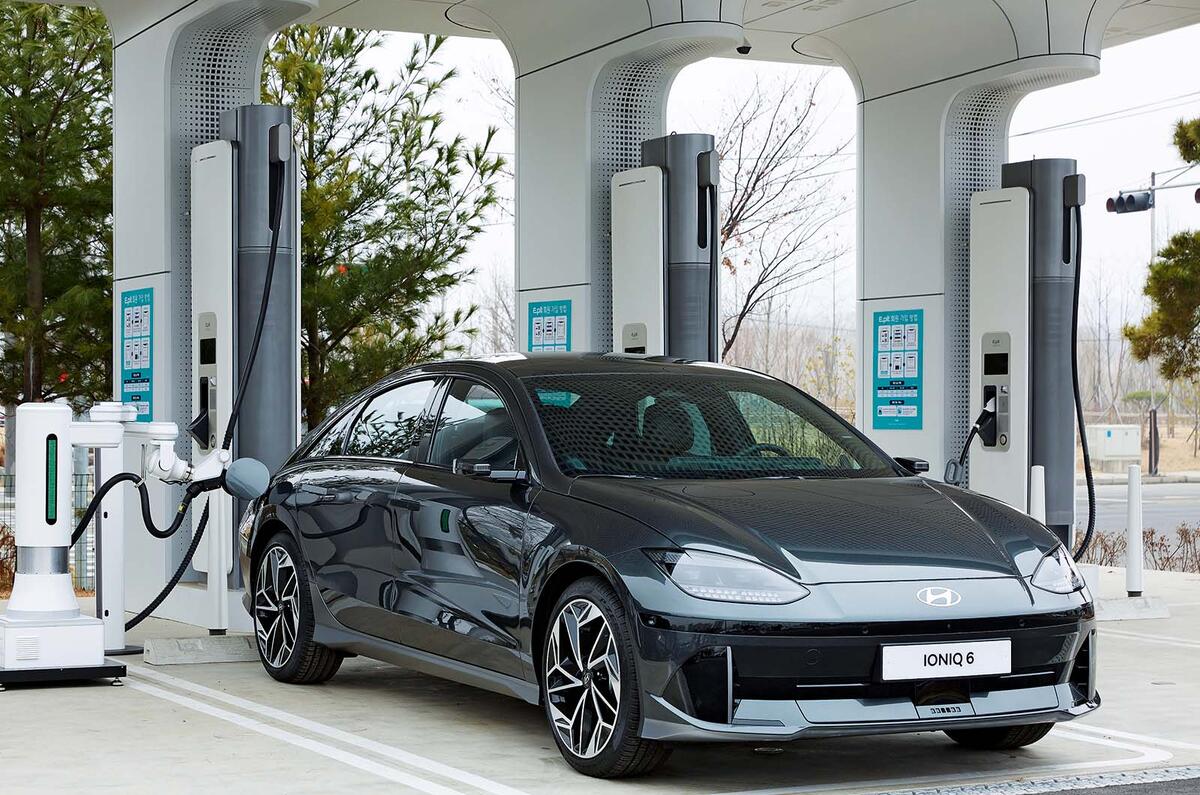Charging EVs, and particularly how fast EVs can be charged, is seen as a major barrier to their uptake.
Speed is going to become an ever more pressing problem because, unlike petrol and diesel cars, EVs need a dedicated parking spot for a significant period when charging, so the less time they spend doing it the better.
However, faster charging and higher power being transmitted will mean cables become heavier, thicker and more cumbersome. That will make conventional handling difficult or impossible, especially for people with mobility problems.
It may also make things trickier in the dark, simply in terms of presenting a charger plug to the charge port and plugging it in. Hyundai’s answer to all this is the automatic charging robot (ACR).
The ACR was revealed in CGI videos last year but the real thing was on display at the 2023 Seoul mobility show in March. The ACR is installed at the side of a parking bay. The driver of the car (which in the demo is an Ioniq 6) pulls up in front of the bay, hops out and presses a button on the key fob, which instructs the Ioniq 6 to self-park and charge.
At that point, the car manoeuvres autonomously into the right position, and the ACR communicates with it to open the charging port and plugs in. Once done, the robot unplugs, the port closes and the driver gets a prompt on the phone to say charging is complete.
To make the system work, the robot has to figure out the exact position of the car, the shape of the charging port, the weather, the presence of any obstacles (which may be human) and the weight of the cable.
The brains behind the routine is an algorithm, 3D camera-based artificial intelligence and advanced control technology that enables the robot to handle the chunky cable with the light touch needed.
The robot is designed to work in the open in common with existing chargers and is certified to IP65 under the international IP (Ingress Protection) rating system. Six is the highest score in the dust-proofing category and five means it can withstand a high-pressure water jet.
Robot charging has been getting a fair bit of attention over the past few years. Volterio has developed a system resembling a giant mouse that manoeuvres underneath a car and plugs into a dedicated charge port. It’s also working on a unit that’s embedded in the ground.
The Schunk Group has designed an underbody system that pops up from the ground and locates an underbody charger installed on the car. The technology can be applied to ultra-rapid DC systems able to deliver enough charge for 375 miles in a few minutes and 22kW AC home units that can sit on a garage floor and connect to a wallbox.
Electronics giant Siemens has a solution too: a robot system that can deliver 300kW and simply requires t he car to park in a marked area to be charged.




Join the debate
Add your comment
Awesome, let's see how well the UK companies roll this out. They've done such a geat job on simple manual charging stations.....